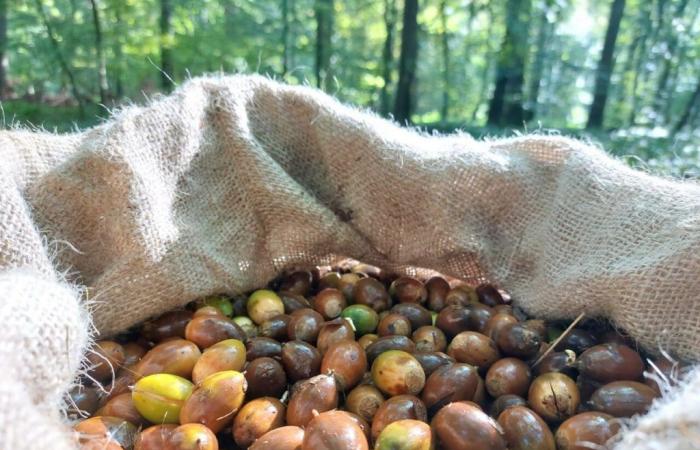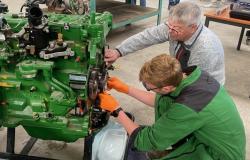Par
Nicolas Giorgi
Published on
Oct 12, 2024 at 6:02 p.m.
See my news
Follow News Oise
The days are getting shorter, the temperatures are dropping. Autumn is here. A season that coincides with the harvest of acorns of oaks in theOise. An operation carried out under the leadership of the National Forestry Office (ONF), approximately every two years.
As with the harvest, the harvest level varies from one year to the next. That of 2024, which began this week for a duration of 15 days, is coming like an excellent vintage in the Oisedespite the downpours of water that were dumped in the national forests by the Kirk depression.
Canvas bags in the dryer
“We are in a high partial harvest. We are off to a very, very good season,” notes Christophe Lefevre, the ONF technician responsible for supervising the harvesters.
A party was organized this Friday, October 11 in the forest of Saint-Quentin Parkbetween the Mont Saint-Adrien and the Fouquenies forest roadnorth of Beauvais (Oise). A 750 hectare massif populated at 50% Sessile oaksa species particularly resistant to climatic hazards.
It’s a real time trial race who has been engaged in this oak grove since Monday. The association paid by volume for this task (the rate charged in other regions is 2.65 euros/liter), sent a team of five harvesters into the field.
On this wooded plot, 325 litres fruit have already been collected since Monday in Saint-Quentin Park.
In the shade of this century-old oak, Zaurg, 38, began manually picking these fruits labeled “reproductive material”. The thirty-year-old is originally from Sudan. “I have participated in several of these expeditions since the beginning of the week, in the Oise, in Compiègne, but also in Roye in the Somme,” he explains to us.
To do this, he benefits from the advice of ONF technicians. “This acorn, for example, germinated too much. We have to leave him,” explains Christophe Lefevre, who came with Julien, his superior, who has the same surname.
Designing the forest of tomorrow
Once the burlap bags are filled, the fruits are sent to a building located La Neuville-en-Hez. “Our collectors in the evening will store them on large concrete slabs, in the dry. They stir them, to prevent them from becoming thicker. They will then be put back in bags the day before transport,” explains the forester.
The acorns will then head towards the Joux drying plant, in the Jurawhere the seeds will be immersed in baths at 40°C, sorted and kept in a cold room until spring.
These seed lots will then be sold to nurseries, or kept in order to ensure the repopulation of public forests.
It’s very regulated. These acorns are labeled forest reproductive material. These are pure stands. Here we are only on sessile oaks.
New methods of forestry
The idea behind this whole process is to make the more resilient forests. “In the Paris region, for example, we have a lot of pedunculate oaks. A species in great suffering today,” observes the forester.
New methods of forestrysuch as the “assisted migration” of species coming from the Paris basin or the South of France are thus tested in the Picardy forests. “We have to ask ourselves the question: will the species you plant today be adapted to the climate in 50 years? », explains Julien Lefevre. “The idea is to have blending of essences. And to protect ourselves from crises linked to single-species plantations, as we experienced with the bark beetle crisis. »
Can you collect acorns in the forest?
The answer is no. Don’t improvise as a slacker who wants! Collection is considered theft and can result in a fine of up to 750 euros depending on the volume collected. A tolerance can nevertheless be observed by the owner in the case of very small quantities, a bit like for mushrooms, the picking of which is limited to 5 kg per day and per person according to the forest code.
Two years are necessary to obtain an oak plant. “We start observations at the end of April-beginning of May. When we estimate that there are enough acorns, we do so according to demand,” continues his colleague, Christophe Lefevre.
The sessile oaks of Saint-Quentin Park, in Oise, are considered among the best trees in France. One of them, 170 years old, is also classified as a “remarkable tree”.
Follow all the news from your favorite cities and media by subscribing to Mon Actu.






